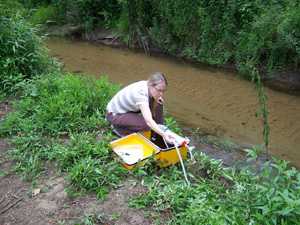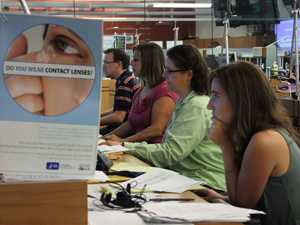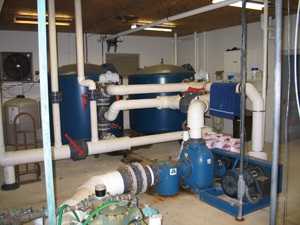Domestic Water, Sanitation, and Hygiene Epidemiology Team
Team Lead: Katie Fullerton, MPH

Water sample collection during an investigation of cryptosporidiosis at a summer camp

Investigation of a multi-state outbreak of eye infections caused by Acanthamoeba in CDC’s Emergency Operations Center

Pool treatment equipment designed to protect swimmers from germs in the water
The lead epidemiology unit for U.S. water-related disease in CDC’s National Center for Emerging and Zoonotic Infectious Diseases.
Mission: Tracking and investigating waterborne disease and outbreaks, building waterborne disease prevention capability in state and local health departments, and developing effective prevention strategies to improve health.
Our Domestic Water, Sanitation, and Hygiene (WASH) Epidemiology Team works across five areas:
- Waterborne disease and outbreak tracking
- Drinking water
- Recreational water
- Water-related disaster response and preparedness
- Pathogen-specific expertise, support, and disease tracking
- Free-living amebae (Naegleria fowleri, Balamuthia, and Acanthamoeba)
- Protozoan parasites (Cryptosporidium, Giardia)
- Shigella
Our team:
- Operates the Waterborne Disease and Outbreak Surveillance System
- Investigates outbreaks of waterborne disease by interviewing ill people and working with state and CDC laboratories to test clinical and water samples
- Analyzes data to identify the causes, sources, and risk factors of waterborne disease and outbreaks and determine methods for control and prevention
- Gives state and local health departments training, resources, and consultation to build their ability to identify, investigate, and prevent waterborne disease and outbreaks
- Develops estimates of the magnitude and health burden of waterborne disease in the U.S.
- Runs CDC’s Healthy Swimming Program
- Guides development of the Model Aquatic Health Code
- Provides guidance and tools for storing and treating drinking water and responding to water-related emergencies, disasters, and severe weather events
- Provides medical consultation and epidemiologic expertise related to free-living amebae
- Analyzes national data reported for cryptosporidiosis and giardiasis
- Promotes improved public health through education and communication
Domestic WASH Epidemiology Highlights
- Page last reviewed: April 4, 2016
- Page last updated: April 4, 2016
- Content source:


 ShareCompartir
ShareCompartir